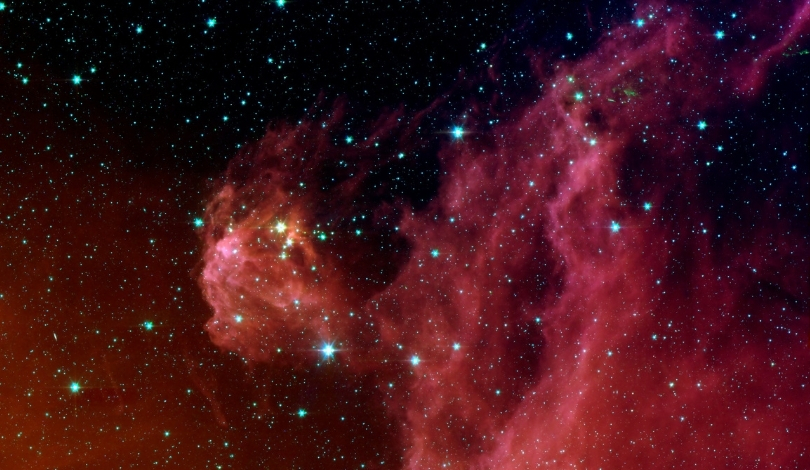The James Webb Space Telescope (JWST) has provided unprecedented insights into the formation and expansion of carbon-rich dust around the Wolf-Rayet binary star system WR 140. Located approximately 5,000 light-years away in the constellation Cygnus, WR 140 consists of two massive stars whose interactions offer a unique laboratory for studying cosmic dust production. The recent observations by JWST highlight the dynamic processes occurring in this distant stellar environment.
WR 140 is known for its elongated orbit, with the two stars approaching each other every 7.93 years. During these close encounters, their stellar winds collide, creating conditions conducive to dust formation. Previous studies in 2022 revealed that these collisions produce rings of carbon-rich dust that expand outward from the stars. The latest JWST images, taken 14 months after the initial observations, show significant expansion of these dust rings within a short period.
How Does WR 140 Compare to Other Dust-Producing Systems?
WR 140 stands out among Wolf-Rayet binaries due to the rapid expansion of its dust shells. Unlike other similar systems where dust production occurs over much longer timescales, WR 140 exhibits visible changes in just over a year. This rapid development allows astronomers to study dust formation and expansion in real-time, providing valuable data on the mechanisms driving these processes.
What Role Does JWST’s Infrared Vision Play?
JWST’s advanced Mid-Infrared Instrument (MIRI) is crucial for observing the cool carbon-rich dust that surrounds WR 140. Unlike visible or near-infrared telescopes, MIRI can detect the subtle emissions from dust particles that are otherwise obscured by the stellar winds. This capability enables the telescope to capture detailed images of the expanding dust rings, offering deeper insights into their composition and behavior.
What Are the Implications for Cosmic Dust Origins?
The findings from WR 140 suggest that massive binary systems like this one could be significant contributors to the cosmic dust observed throughout the universe. The carbon-rich dust produced by WR 140 may have played a role in the formation of rocky planets and organic molecules, potentially influencing the conditions necessary for life. Understanding these processes helps astronomers piece together the history of dust and its impact on cosmic evolution.
Observations over the past decades have established WR 140 as a key system for studying dust formation. The recent JWST data reinforces its importance by demonstrating how quickly dust shells can form and expand. The telescope’s ability to monitor these changes in near real-time provides a continuous stream of information, advancing our knowledge of stellar interactions and dust chemistry.
The ongoing study of WR 140 will likely uncover further details about the lifecycle of cosmic dust and its integration into the interstellar medium. As JWST continues to observe this system, scientists anticipate discovering more about the conditions that facilitate dust production and the eventual fate of these carbon-rich particles in the broader galaxy.
Research indicates that WR 140 will continue to generate thousands of dust shells over time, contributing to the cosmic dust reservoir. This sustained activity makes WR 140 an invaluable target for understanding how massive stars influence their surroundings and the accumulation of essential materials in space.










